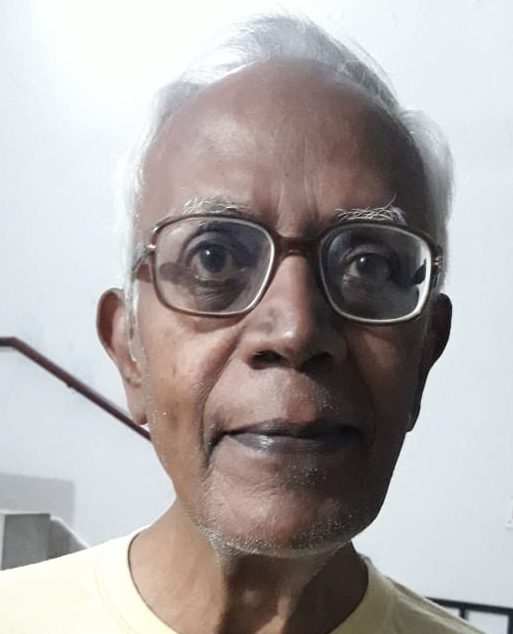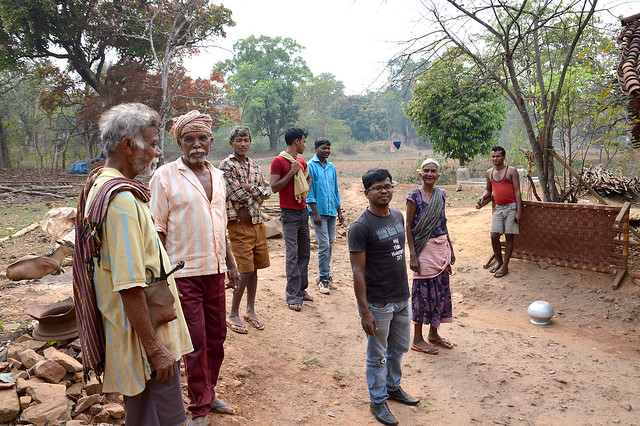Commercial mining – not a boon but a curse
On June 18, 2020, the central government released a list of 41 coal blocks from all over the country to be auctioned to private companies. Most of these mines are located in the predominantly Adivasi-inhabited areas. About 40 per cent of the 60 million people displaced by development projects in the past decades are Adivasis


Photo: flickr
What disaster commercialisation would bring is exemplified in the following narrative of what an Adivasi community was before the start of mining in their neighbourhood, and what damage it did in the course of time.
Dubil is an Adivasi village in the Saranda forest of the West Singhbhum district in Jharkhand. This village of about 500 persons lived a happy life close to nature. Paddy was the main crop, harvested twice a year, and supplemented by various cereals. The village was blessed with two natural streams, which ran with fresh water throughout the year.
But alas, the Chiria iron ore mine, covering 3,276 hectares, came up in the vicinity. As the mining expanded year by year, the happy life of the Dubil Adivasis started to shrink steadily. The giant company started to distribute the actual mining activities to the subsidiary companies who felt they had no obligation towards the neighbouring village communities in terms of compensation for the damage done to their agriculture and water sources.
Eventually, about 100 acres of their fertile land became barren and the water stream was flowing with reddish water.
Apart from this, labourers from outside were being brought to work at the mines whereas the locals were reduced to the category of ‘day-wage labourers’. When the people of Dubil and the neighbouring communities organised themselves and protested against this injustice, police cases were filed against them and six of their leaders were put behind bars. Verily, insult added to injury.
Even some half-hearted steps by the government to ameliorate their living condition did not make any difference. The housing scheme failed when half of the houses collapsed or became uninhabitable. The hand pumps stopped working, the solar lamps and radios have disappeared, the bicycles have broken down. Thus, the promise usually made at the start of the project of bringing ‘development’ falls flat, and people are left with greater deprivation and anguish as mentioned in ‘Mission Saranda –
a war for natural resources in India’ by Gladson Dungdung.

The government’s decision is arbitrary and unjust
On June 18, 2020, the central government released a list of 41 coal blocks from all over the country to be auctioned to private companies. This is said to be the panacea for the economic crisis the country is presently facing. We are told 10 crore tonnes of coal will be made into gas, India will become the biggest coal-exporting country in the world and this will be a giant step towards making our country self-reliant. In taking this step, the central government ignored the plea by the Jharkhand government that the auctioning be delayed for six to eight months until the battle against coronavirus is decisively won. So, out of 41 coal blocks, nine in Jharkhand, nine in Chhattisgarh, nine in Odisha and 11 in Madhya Pradesh, are slated to be auctioned.

Mines located in Adivasi-inhabited areas
Let it be noted that most of these mines in all the above states are located in the predominantly Adivasi-inhabited areas, that is in the Adivasi land and forests. No need to remind anyone that as it is Adivasis are among the most-marginalised communities. They make up about eight per cent of India’s population of 1.3 billion, but about 40 per cent of the 60 million people displaced by development projects in the past decades are Adivasis. Only 25 per cent of them have been resettled, but none rehabilitated. They were given minimal compensation and then neatly forgotten.
Concern No. one: Only two parties (the central government and the private companies) are on the negotiating table. Where are the people whose land will be excavated, will be displaced, will be reduced from being land-owners to landless casual labourers?
Concern No. two: Where are the laws, judicial verdicts … such as the 5th Schedule of the Constitution, which stipulates that the Tribes Advisory Council be taken into confidence for any project in the 5th Scheduled Area, the PESA Act (1996), which requires Gram Sabhas be consulted in the allotment of major minerals, the Samata judgment (1997), which empowers village cooperatives to be the sole agents of excavating coal mines in the 5th Schedule areas, the Forest Rights Act (2006) that makes it mandatory to obtain the consent of Gram Sabha for any mining in the forests, the SC declaring in 2013 that ‘the owner of the land is also the owner of sub-soil minerals’, the Land Acquisition Act (2013), which prohibits the acquisition of the multi-crop agricultural land etc. Does it mean that the laws enacted in the Parliament and the judgments passed by the highest court of the land do not apply to the present central government?
Concern No. three: The past experience shows that private companies are not going to abide by the laws protective of the Adivasi community and their rights over natural resources. The government will acquire Adivasi land, forcibly if need be, and hand it over to the companies. The land is given to them on a platter. If affected people will protest, they will be handled by the law-and-order forces willingly supplied by the local government administration. Multiple cases will be foisted on those who lead peoples’ protests and thrown behind bars. The private companies have nothing to worry about.
Concern No. Four: How to reconcile the fact that on the one hand the corporate houses go on accumulating profits in millions and billions of rupees and will go off the scene once the plunder is complete, and on the other hand, the small and marginal farmers who lose all they have and are reduced to penury and destitution? Has even a semblance of justice disappeared in our society?
Concern No. Five: It is not to say that there should be no mining of minerals at all. Only it must be to meet the needs of the community and not for making profits. We can combine the two significant Supreme Court judgments; namely, the 2013 verdict, which entitles the owner of the land to be also the owner of sub-soil minerals, and the 1997 verdict which declares that cooperatives of local Adivasis alone can do the mining work. It then becomes the paramount duty of the state to help in the formation and registration of coops and to provide the wherewithal such as the initial capital, the needed technical expertise, managerial skills, marketing avenues etc so they can function flawlessly and to the benefit of the whole community. The state can do it if it really wants the development and welfare of all. Where there is a will, there is a way.
Stan Swamy is the founder-director of Bagaicha, an institute of research and training near Ranchi, Jharkhand. He is an activist, writer, and thinker on issues of displacement and human rights.
(Views are personal)

